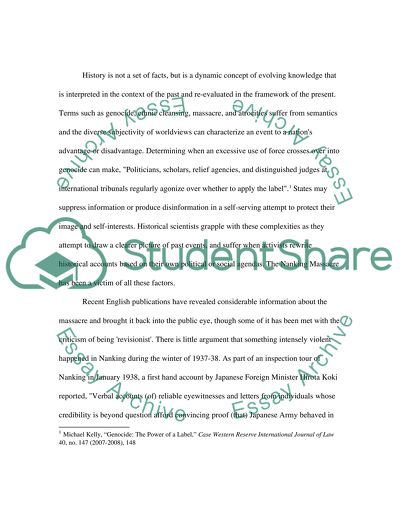Cite this document
(Accuracy of the Nanking Massacre of Critical Importance Case Study, n.d.)
Accuracy of the Nanking Massacre of Critical Importance Case Study. Retrieved from https://studentshare.org/history/1549541-deniers-of-genocide
Accuracy of the Nanking Massacre of Critical Importance Case Study. Retrieved from https://studentshare.org/history/1549541-deniers-of-genocide
(Accuracy of the Nanking Massacre of Critical Importance Case Study)
Accuracy of the Nanking Massacre of Critical Importance Case Study. https://studentshare.org/history/1549541-deniers-of-genocide.
Accuracy of the Nanking Massacre of Critical Importance Case Study. https://studentshare.org/history/1549541-deniers-of-genocide.
“Accuracy of the Nanking Massacre of Critical Importance Case Study”. https://studentshare.org/history/1549541-deniers-of-genocide.


